Creating a Veggie Lover
Creating a Veggie Lover We all know vegetables are important but getting them into kids’ tummies can be a challenge. ...
Read MoreImportant notice to customers — product packaging changesLearn More
NEW FOOD PACKAGING IN STORE NOW
From August 2018, customers will notice our rebranded food packaging start to appear on shelf in all major stockists.
 CURRENT Packaging
CURRENT Packaging

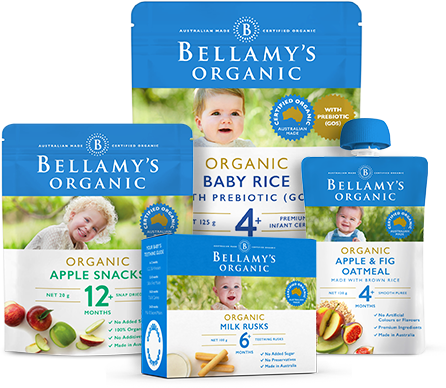 new Packaging
new Packaging
We are excited to announce our new packaging will start to appear on shelf from August 2018. This transition to new packaging will occur over a number of months. During this time there will be a mix of current and new packaging on shelf.
There are no major changes to these products, in some instances there is a small name change or slight recipe improvement, see below for the full details.
Products purchased via the website will be delivered to customers in our old packaging until the end of October. From November, products ordered from the website will be delivered in the new packaging.
Please note, our Infant Formula packaging will not be rebranded until later in 2019.
For any questions, connect with our team of accredited practising Dietitians on +61 3 6332 9200
Product name changes
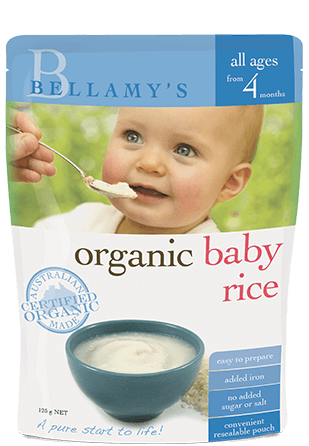 CURRENT Packaging
Organic Baby Rice
CURRENT Packaging
Organic Baby Rice

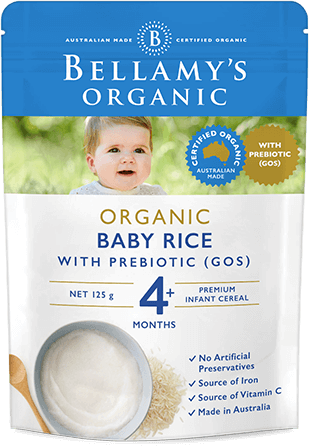 NEW Packaging
Organic Rice with Prebiotic (GOS)
Note: Our Baby Rice recipe has been upgraded to now include GOS Prebiotic
NEW Packaging
Organic Rice with Prebiotic (GOS)
Note: Our Baby Rice recipe has been upgraded to now include GOS Prebiotic
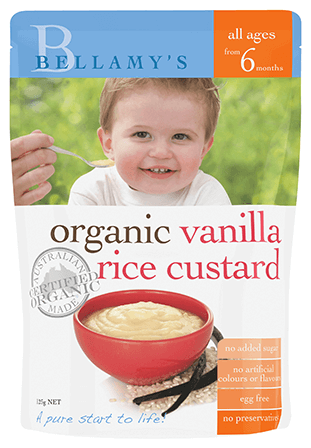 CURRENT Packaging
Organic Vanilla Rice Custard
CURRENT Packaging
Organic Vanilla Rice Custard

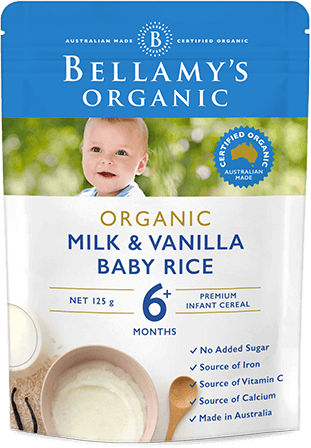 NEW Packaging
Organic Milk & Vanilla Baby Rice
NEW Packaging
Organic Milk & Vanilla Baby Rice
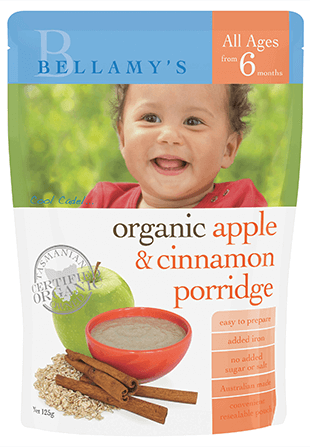 CURRENT Packaging
Organic Apple & Cinnamon Porridge
CURRENT Packaging
Organic Apple & Cinnamon Porridge

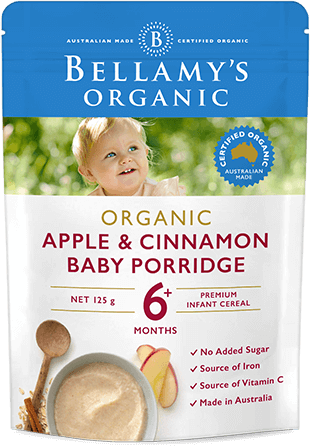 NEW Packaging
Organic Apple & Cinnamon Baby Porridge
NEW Packaging
Organic Apple & Cinnamon Baby Porridge
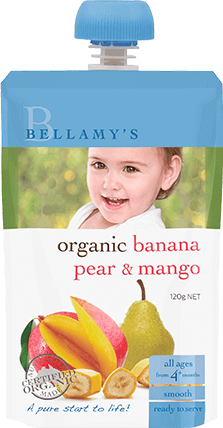 CURRENT Packaging
Organic Banana, Pear & Mango
CURRENT Packaging
Organic Banana, Pear & Mango

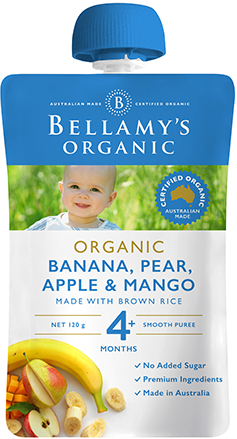 New Packaging
Organic Banana, Pear, Apple & Mango
New Packaging
Organic Banana, Pear, Apple & Mango
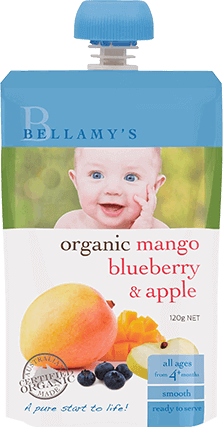 CURRENT Packaging
Organic Mango, Blueberry & Apple
CURRENT Packaging
Organic Mango, Blueberry & Apple

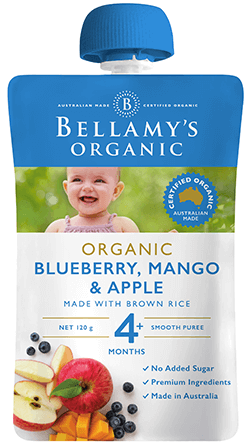 New Packaging
Organic Blueberry, Mango & Apple
New Packaging
Organic Blueberry, Mango & Apple
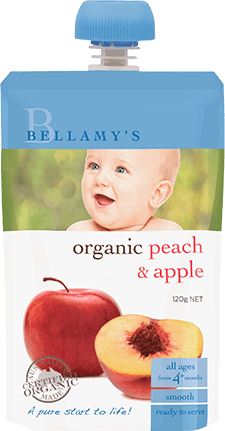 CURRENT Packaging
Organic Peach & Apple
CURRENT Packaging
Organic Peach & Apple

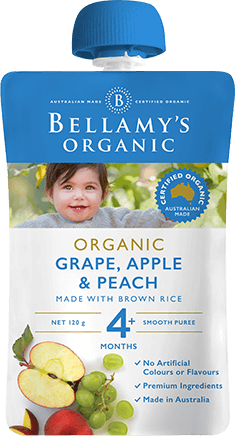 New Packaging
Organic Grape, Apple & Peach
New Packaging
Organic Grape, Apple & Peach
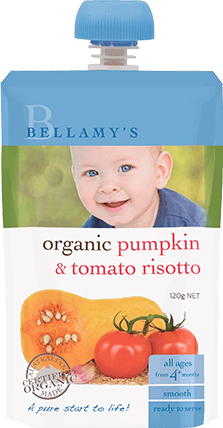 CURRENT Packaging
Organic Pumpkin & Tomato Risotto
CURRENT Packaging
Organic Pumpkin & Tomato Risotto

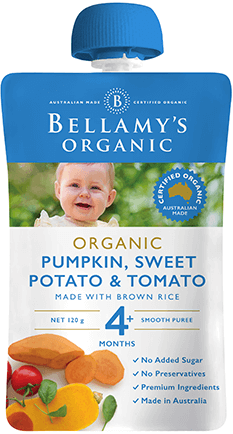 New Packaging
Organic Pumpkin, Sweet Potato & Tomato
New Packaging
Organic Pumpkin, Sweet Potato & Tomato
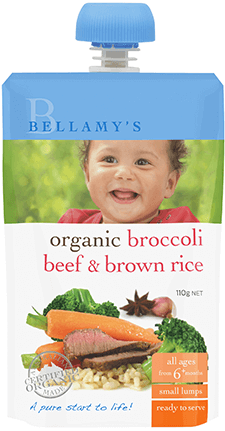 CURRENT Packaging
Organic Broccoli, Beef & Brown Rice
CURRENT Packaging
Organic Broccoli, Beef & Brown Rice

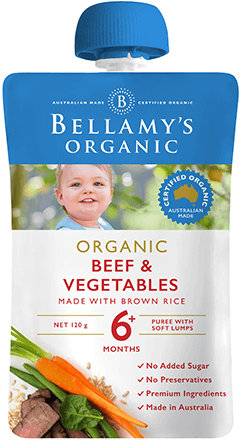 New Packaging
Organic Beef & Vegetables
New Packaging
Organic Beef & Vegetables
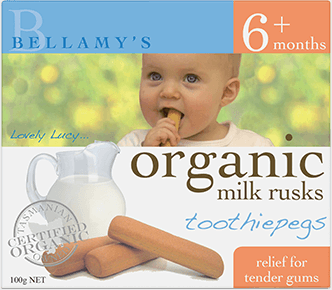 CURRENT Packaging
Organic Milk Rusks Toothiepegs
CURRENT Packaging
Organic Milk Rusks Toothiepegs

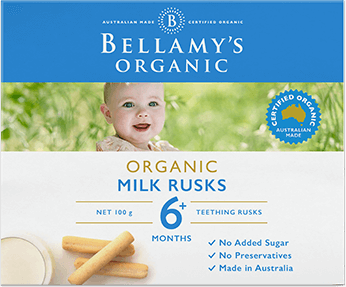 New Packaging
Organic Milk Rusks
New Packaging
Organic Milk Rusks
Your baby needs a variety of food textures and practice before they can eat family food. Including a variety of food textures when introducing solids is important as it helps them learn how to chew, aids speech development and encourages your child to accept different textures. Babies need practice before they can eat family foods.
Delaying texture progression can cause fussy eating habits that may continue throughout life. So here we break down texture by age, but remember every baby is different so it’s important to let them guide you.
Birth – around 6 months
Liquids only
6-7 months
Given your baby has only had milk for the first six months of their lives, it makes sense that the first food offered in the beginning should be pureed and mashed. Every baby is different though, so whilst some may prefer pureed foods, others may be happy to begin with semi-solid or finger foods.
Examples of pureed and mashed foods include:
Foods of various textures and thickness can be gradually introduced after your baby is taking well to eating.
If you do start with pureed foods, increase the texture to mashed and soft pieces over a couple of weeks. This will help your baby to be exposed to a variety of textures and encourage chewing. You can also use a combination of textures in one meal. But don’t combine textures in one mouthful as your baby won’t be ready for the texture change.
When giving food with lumps, your baby may spit it out or even gag the first few times. This does not mean they are not ready, they just need to keep practising!
Once your baby has mastered each texture, increase to minced and chopped. These are foods that have been roughly mashed or crumbled. There may be a combination different sized lumps which are obvious and prominent. Even babies without teeth can manage these foods – all they need is practice!
Examples of minced and chopped foods include:
Offer lots of different foods for your baby to practice eating in different sizes and textures.
8-12 months
By eight months, most babies can manage finger foods. These are foods that can be picked up and require some chewing. Babies enjoy picking up food with their hands and eating by themselves. These foods break down easily to small pieces in the mouth when chewing.
Examples of finger foods include:
12 months onwards
By the time your baby is 12 months old, they should be eating the same foods that the rest of the family is eating. These may contain more than one consistency. You might still need to chop some foods into smaller pieces and cook vegetables until they’re soft. Remember, small hard foods such as whole nuts, raw carrot or apple pieces should not be given to children under three.
Examples of family foods include:
If your child is having difficulty progressing through textures, talk to your child health nurse or GP. You may be referred to a dietitian or speech/language specialist for further help.
Babies are adventurous eaters so let them time to explore and develop at their own pace. Enjoy watching them quickly learn to manage food of different textures. Don’t worry if your baby doesn’t take much to begin with, they just need lots of practice!
References: